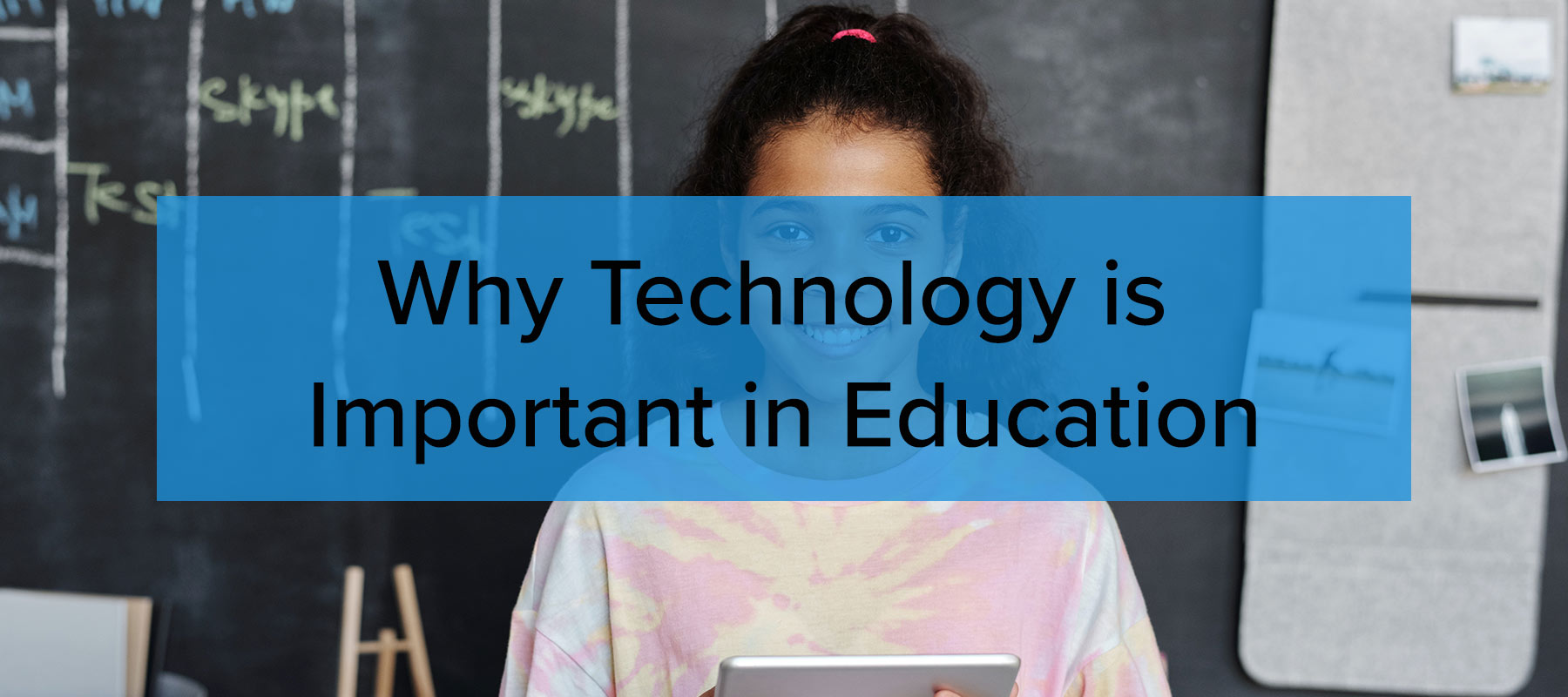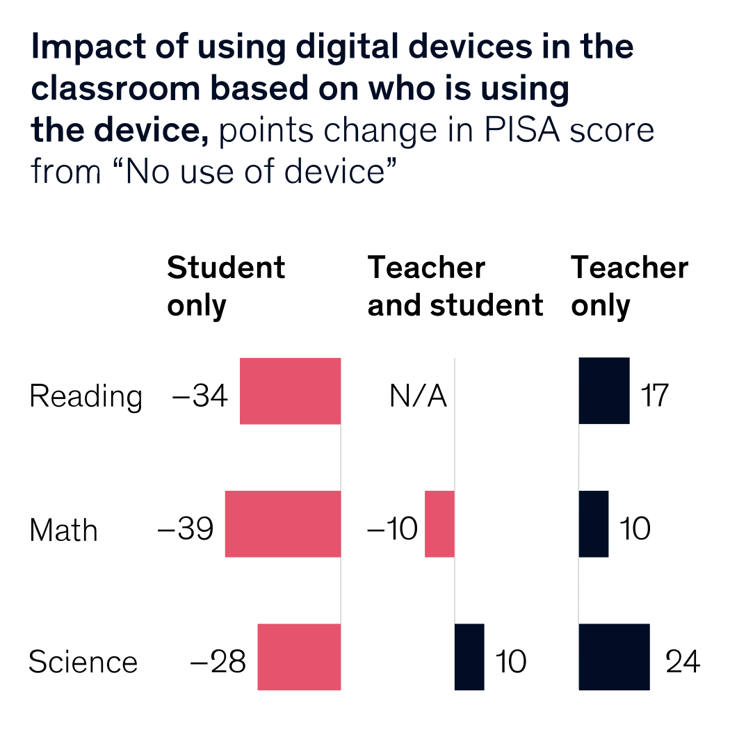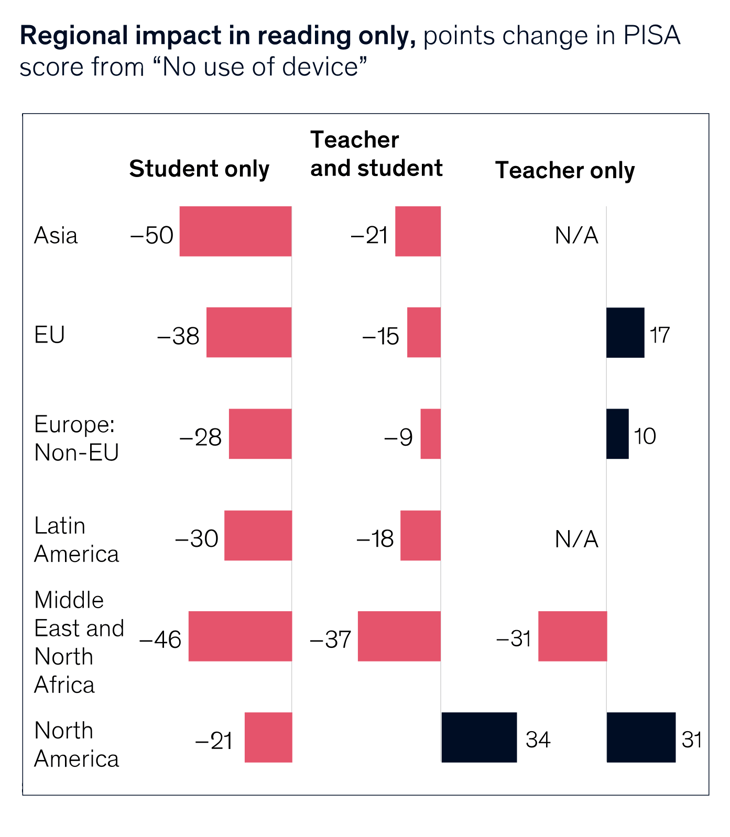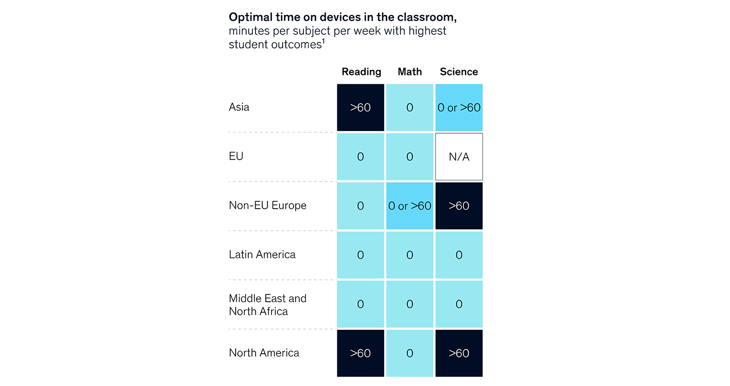
Digital technology is increasingly ubiquitous. With us all the time, used for payments, access, leisure, work and self-education, it’s also increasingly incorporated into the classroom and the life of the school.
But how do students benefit from educational technology, and what should schools and teachers be doing to help them get the most from it?
Let’s start at the beginning.
EdTech 101: What is educational technology?
Educational technology is technology in the service of educational goals. It’s where IT innovations meet pedagogical technique and experience in the pursuit of better outcomes for all students.
When IT first entered schools, it did so as a separate subject. But in the modern world, that’s anachronistic. We still have classes that focus on computer technology, but it’s a little similar to math or reading: every class uses those skills, and every teacher improves communication with written cues, books and handouts. You don’t have to be in English class to read, and you don’t have to be in computing class to use a computer.
The world outside the classroom isn’t what it used to be either. When desktop machines migrated into schools in the 1980s, they were still working on making inroads into business premises. The fax machine was alive and well, and many towns didn’t have an ATM because they were too advanced. Now, it’s more likely to be due to the popularity of payment apps on the computers we all carry in our pockets.
Teachers who use computer technology in every part of their lives are teaching students who do the same. Using computer technology to augment teaching is the obvious choice. It’s also supported by a wealth of research showing positive outcomes.
Benefits of Education Technology
Education technology gives teachers a toolkit to deliver better results for their students. Key benefits include:
Connects you with your students
Today’s students are familiar with digital content, delivery, and environments. Try finding a class where no kid has a Facebook account, TikTok, Minecraft… They are used to using digital resources, and not just for games and leisure. They’ll use video calling to talk to grandparents and touchscreens to order a meal. We wouldn’t try to speak to them in Elizabethan English (outside English class, of course!) — and we shouldn’t be relying on mimeographed handouts either. As far back as 2013, 92% of teachers said the internet had a ‘major impact’ on their ability to access content, resources and materials; 69% said it had a major impact on their ability to share ideas with other teachers, 67% said the same for its effects on their ability to interact with parents, and 57% on their interactions with students.
Digital sources engage students better
Students are accustomed to digital sources, but they’re also more engaged by them. Digital signage gets five times as much attention as static signage and between 13% and 41% more retention.
It’s not just displays. Digitally-sourced content is more engaging and effective too, because it’s more likely to be current and presented in a format students find engaging. Sixty-five percent of teachers say digital sources let them demonstrate things they couldn’t show any other way — how atoms work, how riverbanks erode, or how geometric progression can lead you to lose your empire a grain of rice at a time, for instance. How could these be shown to students effectively without digital technology? Traditional physical representations either don’t allow for them or are unsatisfactory by comparison.
Prepares students for future careers
Every student has a future career — whether they leave school for employment, further education, or to start a business. In many people’s lives, they’ll go on to do all three at some point. And you can’t realistically hope to do any of them without being a comfortable and proficient user of digital technologies. All future careers will require digital skills and a level of IT attainment previously only required in the technology industry. Students don’t acquire these skills from IT classes, or from using their phones for leisure activities. They learn by watching and doing in every subject’s classroom, bringing the same skills — interrogating a text in English, assessing a source in history — to bear on digital environments.
Makes education accessible for a wider range of learners
Different learning styles are catered to better by digital resources: 73% of teachers agree, and the reasons are obvious. In the general population:
- 65% are visual learners who need to see information to retain it
- 30% are auditory learners who remember best what they hear, not what they read or see
- 5% are kinaesthetic learners who need active, preferably physical, participation in order to learn effectively
That brings us to 100%. And the most common method of teaching, read-write, focused on the written word, doesn’t even feature.
For millennia, writing and reading were our most efficient and sophisticated forms of information transmission. But historically reading was usually done aloud and accompanied by illustrations in the text or in the classroom, as well as sometimes by movement and other transmission methods. This is wise because the figures given above are only partially accurate!
In fact, most people have hybrid learning styles, preferring a mix of auditory and visual, or kinaesthetic and reading, for instance. In a 2006 study on medical students, 46% had quadmodal learning, meaning they learned best when reading and writing, movement and action, visuals and auditory input were all used together. Trimodal learning accounted for 32% of learners, bimodal for 24%. No learners had a singular learning style.
Clearly, these mixed learning styles are much easier to cater for using digital displays and presentations that combine videos, brief lectures, written and physical problem-solving and more. That’s particularly true where there are large tranches of publicly-available educational materials on websites like YouTube that can be collated easily using modern presentation software.
Equips students for digital citizenship
If you’re over 40, you’re probably old enough to remember IT lessons that involved textbooks and blackboards, not computers. We shouldn’t take the same ‘swimming on dry land’ approach to digital citizenship: it should involve feedback from the target activity and contact with real digital environments. Otherwise, the skills won’t be transferable, and attempts at admonition before the fact will be as effective as they usually are: not very.
Students need to learn digital citizenship by seeing and practicing the requisite skills in a safe environment — just like you learn to swim in the shallows, with an instructor or parent close by, before diving into the sea.
Remote learning and hybrid learning
Remote learning has crossed the Rubicon. Now it’s been proven and tested, like remote work, it’s here to stay. The future will involve a mix of remote, in-person, and hybrid environments. For instance, in some classes, a teacher may give a live lecture to students, some of whom are present in person while others Zoom in. In others, a prescreened lecture is presented, followed by a seminar or class discussion which may be conducted live, or by a teacher who is present via Zoom. Conventional classes can be enlivened by the presence of teachers from outside the school, who can present live or in advance over video.
Digital teaching and learning environments help to make this more effective and prepare students and teachers for a hybrid present/remote learning and working life.
Building technology into your school
What’s the most effective way to bring educational technology into your school, your classrooms, and your students’ lives?
Building technology into classroom time
The most effective use of technology for education within classrooms is when only teachers control the technology in use. The most ineffective or harmful is when only students do:

Focus on reading alone and the benefits of teacher-controlled technology are even clearer in North America than in other regions:

We should be wary of taking this as gospel, though: 73% of AP and NWP teachers say they and/or their students use their mobile phones in the classroom to finish assignments, meaning these effects may be stronger in less motivated students.
Active teaching
The case for using educational technology for active teaching in classrooms is strong. Outcomes are best in North American schools when digital technologies controlled by teachers are in use for over an hour, or not used at all:

This strongly suggests that teachers should use the digital screens at their disposal for full lessons where appropriate, though of course statistics take no account of individual cases.
Active teaching using digital technology can include a range of sources, inputs and methods, as we’ve already discussed.
Passive/background screen use
Where lessons don’t require the use of classroom screens, they can simply be turned off. But it’s often better to use them to display lesson, subject, or cohort-specific messaging by using them as passive digital signage. We know that digital signage encouraging desirable behaviors can have a ‘nudge’ effect, particularly helpful when individuals know the right thing to do but have trouble remembering or making up their minds. This can be a great way to incorporate the pursuit of SEL and behavior goals into classes.
Alternatively, the same signage can be used to display useful information relevant to the class — formulae, lists of characters in a play or book, or timelines.
Outside the classroom
Digital signage outside the classroom can also be used to encourage improvements in behavior, attitude, and attentiveness. It can be used to underline rules of behavior in corridors and stairwells, or to encourage participation in sports activities — crucial when only about half of US K-12 students get enough physical exercise, particularly in light of the benefits to academic attainment.
Another major benefit of signage outside the classroom is wayfinding, especially in larger campuses or at the beginning of new school years when a whole intake’s-worth of an age group is lost at once. Reminders about homework, including QR codes or links to study materials, can also help students stay on track.
Conclusion
Technology’s place in education is both uncontested and central. It’s a vital avenue of education, like reading or math, no longer primarily a subject in its own right. Its increasing centrality in ordinary life means that study of it and with it are both crucial. But we shouldn’t be misled by the fact that students are comfortable with consumer devices and applications. They still need our help learning to navigate the digital world ahead.
Digital technology also has a place in every classroom, helping increase understanding and engagement, and delivering content that would otherwise be impossible — often to students who would otherwise not be paying attention. As teacher-controlled technology like digital signage makes its way into more classrooms and more school corridors and lobbies, we can expect to see its role in driving academic attainment and student wellbeing ever more clearly demonstrated.





